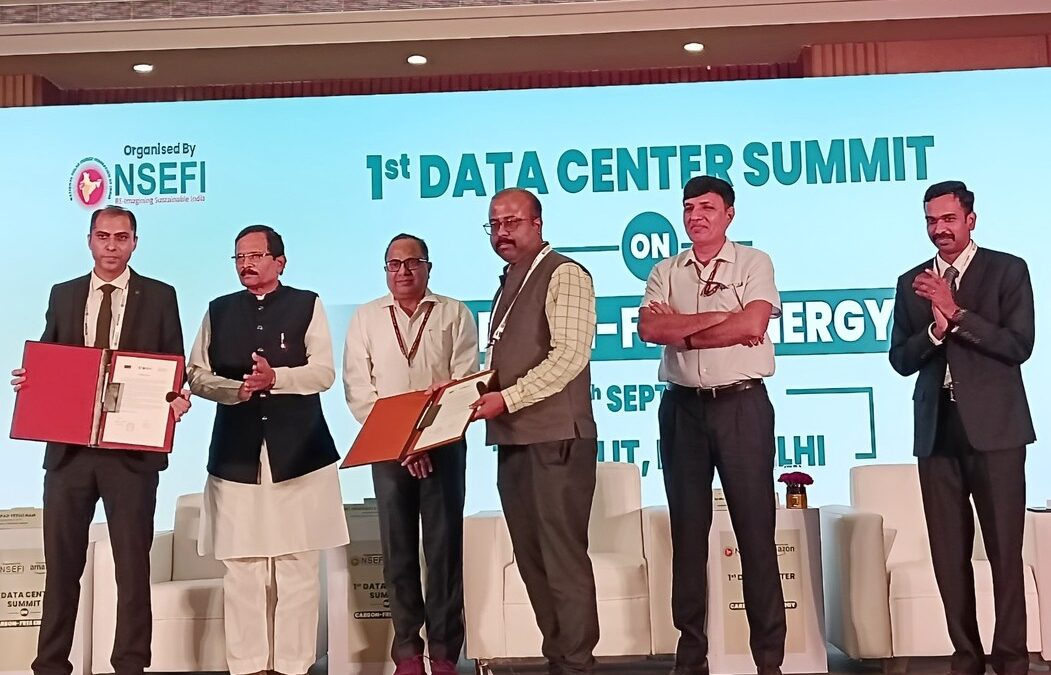TERI, NSEFI Sign Major Pact to Decarbonize India’s Data Centers
TERI advances green data centers with NSEFI pact and launches Green Budgeting Toolkit to align India’s fiscal policies.
The Energy and Resources Institute and the National Solar Energy Federation of India signed a pact on Thursday to accelerate the decarbonization of India’s fast-growing data center industry. The sector is facing increasing pressure to reduce emissions as digital demand surges.
The statement of intent, signed at the first Data Center Summit on Carbon-Free Energy, will guide research, policy advocacy and pilot projects. The agreement focuses on renewable power paired with storage solutions to provide affordable and reliable electricity to data centers.
TERI’s director for electricity and renewables, Alekhya Datta, said that India’s data centers may consume nearly 390 terawatt-hours of power by 2070. He added that the continued fall in solar-plus-storage costs makes the transition scalable and cost-effective.
Coalition for Carbon-Free Growth
NSEFI Chief Executive Subrahmanyam Pulipaka warned that data centers could soon become one of the country’s largest power consumers. He said that the NSEFI Green Data Center Coalition will unite stakeholders and scale clean power through demand aggregation and new business models.
“NSEFI will play a pivotal role in scaling firm power for data centers,” Pulipaka said. “Our collaboration with TERI is a crucial step toward sustainability.”
India already ranks among the world’s biggest data consumers, with monthly use per person exceeding 19 gigabytes. This growth has fueled demand for storage facilities, which consume up to 50 times more energy per square foot than commercial offices.
By 2030, data centers could account for 6 percent of India’s electricity demand, up from less than 1 percent today. Industry estimates suggest greening these facilities could cut emissions by as much as 88 percent.
Policy and Market Roadmap
The coalition will work with central and state governments to shape policy frameworks, develop renewable purchase agreements and promote energy-efficient cooling. It also plans to share best practices on ESG standards, compliance and technology adoption.
The SoI signing was attended by Minister of State for Power and New and Renewable Energy Shripad Yesso Naik. Executives from Amazon, which supported the event, also joined the discussions.
Expanding Sustainability Push
A day earlier, TERI launched Version 2.0 of its Green Budgeting Toolkit during a national webinar with participants from more than 50 countries.
The toolkit, supported by a new online portal, will help governments, academia and civil society embed sustainability in fiscal planning.
The updated version includes a pro-forma for departmental self-assessment, a structure for Green Budget Statements and a detailed playbook. By linking fiscal policy with sustainability, TERI aims to strengthen transparency and accountability.
Distinguished fellow Prodipto Ghosh said budgets are the largest source of expenditure in most economies and must be used to drive sustainability. Senior fellow Shailly Kedia added that green budgeting can track spending on environmental goals and evolve into outcome-based reporting.
States and Global Trends
Several Indian states and Union Territories have already expanded green budgeting. Bihar’s allocation grew more than fourfold between 2020–21 and 2025–26, while Puducherry tripled its schemes within three years. Assam also scaled up programs within two years.
Globally, countries such as France, Indonesia and the Philippines have adopted climate-linked budgeting systems. The European Union also tracks climate-related spending across its funds.
Experts said wider adoption and joint ownership by finance and environmental ministries will be essential. Over time, green budgets could be tabled alongside state and Union Budgets, aligning fiscal priorities with India’s climate goals.
Nirmal Menon
Related posts

Subscribe
Error: Contact form not found.


